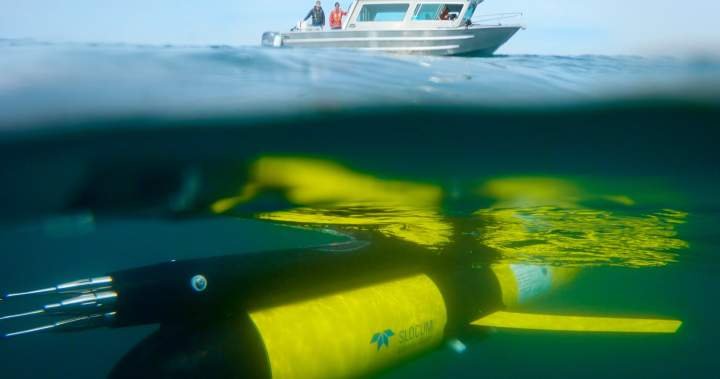Researchers have documented a worrying drop off in oxygen within the waters off British Columbia’s central coast, and say the issue may turn out to be widespread and protracted by mid-century, devastating marine life.
The examine, carried out by the Hakai Institute, used ocean gliders — remotely-operated automobiles — to measure oxygen ranges in Queen Charlotte Sound, a coastal area that stretches from the north of Vancouver Island to the southern tip of Haida Gwaii.
Hakai Institute post-doctoral researcher Sam Stevens, who served as lead writer on the study, mentioned the crew measured a regarding spike in low-oxygen states in 2022 and 2023, primarily through the summer time months.

“As soon as it will get under a sure threshold, there’s not sufficient oxygen for all times within the ocean to operate correctly, and that’s what we name hypoxia,” Stevens defined.
“For numerous causes associated to local weather change, we’re seeing declines in oxygen within the ocean globally.”

Get every day Nationwide information
Get the day’s high information, political, financial, and present affairs headlines, delivered to your inbox as soon as a day.
The crew targeted its knowledge assortment on a deep water space often known as the Sea Otter Trough, the place they noticed backside hypoxia from June by means of October, peaking in August.
Researchers in contrast their outcomes to twenty years of information collected within the space, and the change with traditionally documented ranges was dramatic.
Previous to 2022, hypoxic backside waters have been uncommon, exhibiting up in simply 2.5 per cent of observations. The info from 2022 and 2023 documented hypoxic situations in 13.1 per cent of observations.
The results for marine life within the space might be severe, notably for species that dwell on the ocean ground.
“In Queen Charlotte Sound particularly we’re seeing some rising proof that these oxygen ranges are beginning to influence the ecosystem and so there are some fish species which we haven’t discovered within the area over the previous couple of years which can be normally fairly plentiful there,” Stevens mentioned.
Pacific Hake, a migratory groundfish that lives in coastal waters from California to Alaska was documented as absent within the examine space in 2023.
Stevens mentioned invertebrates like crabs, sea stars and sea cucumbers that may’t transfer out of low oxygen areas are at even better threat. He pointed to mass die offs on the coast of Oregon and Washington for example of potential risks.
“That’s a really drastic however potential consequence of those very low oxygen situations,” he mentioned.

The supply of the issue, Stevens mentioned, is advanced and international.
As ocean floor waters heat, they turn out to be much less receptive to absorbing oxygen; recent water from melting artic ice also can contribute to the method, he mentioned.
Within the case of Queen Charlotte Sound, the researchers imagine a number of the hypoxic waters really originated throughout the Pacific Ocean in subarctic waters off Japan and Russia, as much as a decade or longer in the past.
“The mix of these items make it tougher for oxygen from the ambiance to be injected into the ocean over on the opposite facet of the Pacific after which subsequently we see much less oxygen,” he defined.
“That water travels all throughout the Pacific to us. They’re in B.C. and we see much less oxygen in our waters due to that.”
The examine tasks that if tendencies proceed, greater than half of the seafloor in Queen Charlotte Sound may by hypoxic in the summertime.
He mentioned the implications of the method may have essential ripple results on B.C.’s ocean ecosystem, and name for the cautious monitoring of species’ well being, not simply in Queen Charlotte Sound, however throughout the coast.
© 2025 World Information, a division of Corus Leisure Inc.



